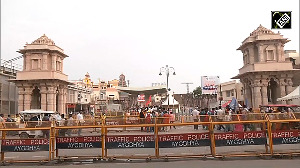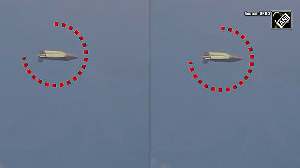After Tuesday's Naxal attack on the Central Reserve Police Forces, police forces across the country are likely to see a sharp jump in their insurance premia when their group personal accident policies are renewed. The hike could be in the region of 200-300 per cent, according to insurance firms.
When the Naxalites attacked the Eastern Frontier Rifles camp at Shilda on February 15 and killed 24 jawans, National Insurance had to pay about Rs 2 crore as personal accident cover to the families of the killed.
The policy is due for renewal soon, and the insurance company is planning to load the premium to cover up the loss.
"We will probably charge a higher premium at the time of renewal. In Naxalite states, obviously the premium is high. This year particularly, the claims are high. In West Bengal, we have already paid about Rs 3 crore under that policy," said a National Insurance company official.
The pay out is almost three times more than the Rs 1 crore paid in a normal year.
A public sector insurance company, which had been providing personal accident cover to the Chhattisgarh state police about four-five years back, discontinued the policy, faced with the claim ratio exceeding 500 per cent in a certain year.
"While our insurance premium was close to Rs 4 crore, we paid Rs 17 crore in one year. After this, we had clear instructions from headquarters that such policies would be dealt by them, and can be renewed only with a loaded premium. We discontinued that policy after the bitter experience. States like Bihar, Jharkhand and West Bengal are known risk areas, so why should an insurance company give a cover for that?" said the insurance company official on the condition of anonymity. With so many districts affected by Naxal violence, this problem is not restricted to eastern India. For Oriental Insurance, which had provided personal accident cover to the Maharashtra state police, the loss ratio went up to 300 per cent after the Naxalite attack in Vidarbha in 2008-09, according to a company official.
"The claims for group personal accident are turning out to be unusually high. Premiums need to be loaded to cover up the losses, as even a few deaths may turn the entire policy to be a loss-making one. And, the problem is not only surfacing in the eastern states, but across other states as well," said an Oriental Insurance official.
For personal accident policies, police personnel generally attract the highest premiums, up to 50 per cent more than other individuals. Right now, the CRPF is not insured. The entire compensation of Rs 38 lakh each for the next of kin of the 75 CRPF troopers who were killed on Tuesday will be paid by the government itself.
"For police personnel the claim incidence is too high. We normally charge higher premium or club it with other administrative officers to cover the losses. If the loss ratio is 300 per cent, the loading of the premium is to be of the same extent. For covering CRPF, it is not possible to provide insurance cover unless the risk is spread out to cover non-risky population as well," says M Ramadoss, chairman and managing director, New India Assurance.
"Covering CRPF will be a huge expense. For an insurance company, it is not possible to cover CRPF personnel at specific regions. It is like covering a known risk," said an official of a public sector insurance company.
According to document titled Agenda Points for Apex Body Meeting on November 24,2008, available on CRPF website: "It is intimated that there is no comprehensive insurance plan... Therefore, it is suggested that a comprehensive insurance plan for CPFs personnel, who died in action, natural death, suicide & disabled cases etc should be started in the CPFs."








 © 2025
© 2025